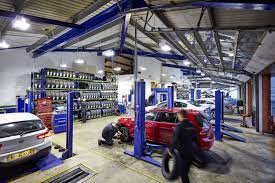In today’s world, efficient and reliable water storage solutions are crucial for residential, commercial, and industrial applications. Among the various options available, the GRP water tank stands out as a durable, versatile, and cost-effective choice. GRP, or Glass Reinforced Plastic, is a composite material known for its strength, corrosion resistance, and lightweight properties. This article explores the features, benefits, applications, and maintenance of GRP water tanks, highlighting why they are increasingly preferred over traditional alternatives like concrete and steel tanks.
What is a GRP Water Tank?
A GRP water tank is a storage unit made from Glass Reinforced Plastic, a material composed of a polymer matrix reinforced with glass fibers. This combination results in a robust yet lightweight structure capable of storing water for various purposes, including potable drinking water, firefighting, irrigation, and industrial processes. GRP water tanks are manufactured using advanced molding techniques, ensuring precision and consistency in design. They are available in various sizes, shapes, and configurations, including sectional (panel-assembled) and one-piece designs, to meet diverse storage needs.
The modular nature of sectional GRP water tanks makes them particularly popular, as they can be assembled on-site, even in confined spaces. This adaptability, combined with their superior material properties, positions GRP water tanks as a leading choice in modern water storage systems.
Key Features of GRP Water Tanks
1. Corrosion Resistance
Unlike steel tanks, which are prone to rust, or concrete tanks, which can degrade over time, GRP water tanks are highly resistant to corrosion. The non-reactive nature of Glass Reinforced Plastic ensures that the tank remains unaffected by water, chemicals, or environmental factors, making it ideal for long-term use.
2. Lightweight and Strong
The GRP water tank is significantly lighter than its steel or concrete counterparts, yet it boasts exceptional strength due to the glass fiber reinforcement. This lightweight property simplifies transportation, handling, and installation, reducing overall project costs.
3. Hygienic and Safe for Potable Water
GRP water tanks are designed to meet stringent health and safety standards, ensuring that stored water remains uncontaminated. The smooth, non-porous inner surface prevents bacterial growth and algae formation, making these tanks suitable for storing drinking water.
4. Customizable Design
Manufacturers offer GRP water tanks in a range of capacities, from small domestic units to large industrial tanks. The modular panel system allows for customization in terms of size, shape, and configuration, enabling users to tailor the tank to their specific requirements.
5. Thermal Insulation
GRP material has excellent insulating properties, which help maintain stable water temperatures. This is particularly beneficial in extreme climates, where it minimizes the risk of freezing in cold regions or overheating in hot areas.
Benefits of Using GRP Water Tanks
1. Longevity and Low Maintenance
The durability of a GRP water tank translates to a long service life, often exceeding 20–30 years with proper care. Unlike metal tanks, which require regular anti-corrosion treatments, or concrete tanks, which may need repairs due to cracking, GRP tanks demand minimal maintenance. This reduces operational costs and ensures reliable performance over time.
2. Cost-Effectiveness
While the initial cost of a GRP water tank may be comparable to other materials, its long-term savings are significant. The combination of low maintenance, durability, and ease of installation makes it a cost-effective solution for water storage.
3. Eco-Friendly Option
GRP water tanks are an environmentally friendly choice. The material is recyclable, and the manufacturing process produces less waste compared to traditional materials. Additionally, their energy-efficient insulation properties contribute to reduced energy consumption in temperature-sensitive applications.
4. Easy Installation
The lightweight and modular design of GRP water tanks allows for quick and straightforward installation. Sectional tanks, in particular, can be assembled in tight spaces or areas with restricted access, such as rooftops or basements, without the need for heavy machinery.
Applications of GRP Water Tanks
The versatility of GRP water tanks makes them suitable for a wide range of applications:
-
Residential Use: GRP tanks are ideal for homes, apartments, and housing complexes, providing safe and reliable storage for drinking water and household needs.
-
Commercial Use: Hotels, restaurants, offices, and shopping malls rely on GRP water tanks for consistent water supply, especially in high-demand environments.
-
Industrial Use: Factories and processing plants use GRP tanks to store water for manufacturing processes, cooling systems, or chemical mixing, benefiting from their chemical resistance.
-
Agricultural Use: Farmers utilize GRP water tanks for irrigation and livestock watering, appreciating their durability in outdoor settings.
-
Firefighting Systems: Many buildings incorporate GRP tanks in fire suppression systems due to their reliability and capacity to store large volumes of water.
Maintenance Tips for GRP Water Tanks
To ensure the longevity and performance of a GRP water tank, regular maintenance is recommended:
-
Periodic Cleaning: Clean the tank’s interior every 6–12 months to remove sediment or debris. Use non-abrasive cleaning agents to avoid damaging the surface.
-
Inspection for Leaks: Check for any signs of leaks or cracks, particularly at joints in sectional tanks. Address issues promptly to prevent water loss.
-
UV Protection: If the tank is installed outdoors, ensure it has a UV-resistant coating to protect against prolonged sun exposure.
-
Ventilation and Overflow Checks: Verify that vents and overflow pipes are clear to maintain proper water circulation and prevent pressure buildup.
Challenges and Considerations
While GRP water tanks offer numerous advantages, there are a few considerations to keep in mind. The initial cost may be higher than some low-quality alternatives, though this is offset by long-term savings. Additionally, improper installation or handling can lead to damage, so it’s essential to work with experienced professionals. Lastly, in extreme conditions, such as seismic zones, additional reinforcement may be required to ensure stability.
Conclusion
The GRP water tank represents a modern, reliable, and sustainable solution for water storage. Its corrosion resistance, lightweight design, and versatility make it a preferred choice across residential, commercial, and industrial sectors. With minimal maintenance and a long lifespan, water tank offer excellent value for money while meeting stringent safety and environmental standards. Whether you’re looking to store drinking water, support industrial processes, or ensure a reliable water supply for firefighting, a GRP water tank is an investment in quality and efficiency. By choosing a GRP water tank, users can enjoy peace of mind knowing they have a robust and future-ready water storage solution.



